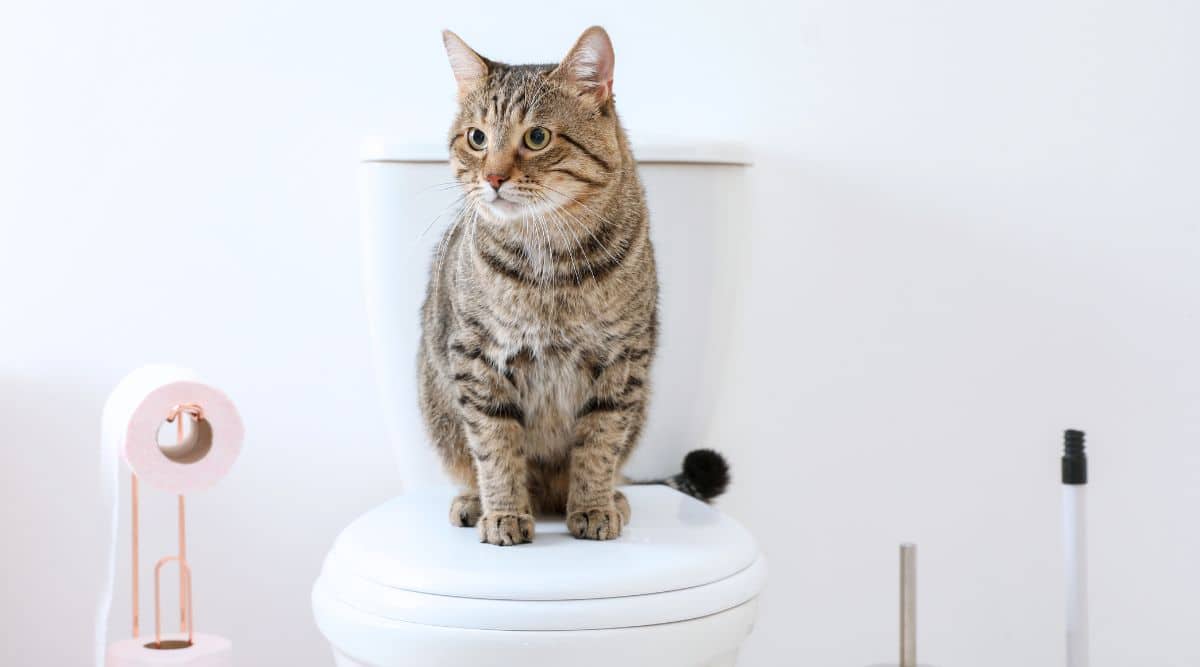Potential Risks of Flushing Cat Poop Down Your Toilet - Advice for Better Handling
Potential Risks of Flushing Cat Poop Down Your Toilet - Advice for Better Handling
Blog Article
Are you hunting for selective information concerning Don’t flush cat feces down the toilet?

Intro
As cat proprietors, it's vital to be mindful of how we throw away our feline close friends' waste. While it may seem convenient to purge cat poop down the toilet, this technique can have harmful repercussions for both the environment and human health and wellness.
Ecological Impact
Purging pet cat poop introduces damaging microorganisms and parasites into the supply of water, presenting a significant threat to aquatic ecological communities. These pollutants can negatively affect aquatic life and concession water top quality.
Wellness Risks
Along with ecological concerns, purging cat waste can also posture wellness dangers to people. Cat feces may consist of Toxoplasma gondii, a bloodsucker that can trigger toxoplasmosis-- a possibly extreme ailment, specifically for pregnant females and people with weakened immune systems.
Alternatives to Flushing
Thankfully, there are much safer and extra accountable ways to deal with pet cat poop. Take into consideration the adhering to alternatives:
1. Scoop and Dispose in Trash
One of the most usual technique of disposing of cat poop is to scoop it right into an eco-friendly bag and throw it in the trash. Make sure to make use of a specialized litter scoop and deal with the waste quickly.
2. Use Biodegradable Litter
Choose eco-friendly feline trash made from materials such as corn or wheat. These trashes are eco-friendly and can be securely taken care of in the garbage.
3. Hide in the Yard
If you have a lawn, consider burying pet cat waste in a marked location away from vegetable gardens and water resources. Be sure to dig deep enough to avoid contamination of groundwater.
4. Set Up a Pet Waste Disposal System
Purchase a family pet garbage disposal system particularly designed for pet cat waste. These systems use enzymes to break down the waste, lowering smell and ecological influence.
Conclusion
Liable animal ownership prolongs past giving food and shelter-- it also includes proper waste administration. By avoiding flushing feline poop down the toilet and selecting alternative disposal methods, we can lessen our environmental impact and safeguard human health and wellness.
Why Can’t I Flush Cat Poop?
It Spreads a Parasite
Cats are frequently infected with a parasite called toxoplasma gondii. The parasite causes an infection called toxoplasmosis. It is usually harmless to cats. The parasite only uses cat poop as a host for its eggs. Otherwise, the cat’s immune system usually keeps the infection at low enough levels to maintain its own health. But it does not stop the develop of eggs. These eggs are tiny and surprisingly tough. They may survive for a year before they begin to grow. But that’s the problem.
Our wastewater system is not designed to deal with toxoplasmosis eggs. Instead, most eggs will flush from your toilet into sewers and wastewater management plants. After the sewage is treated for many other harmful things in it, it is typically released into local rivers, lakes, or oceans. Here, the toxoplasmosis eggs can find new hosts, including starfish, crabs, otters, and many other wildlife. For many, this is a significant risk to their health. Toxoplasmosis can also end up infecting water sources that are important for agriculture, which means our deer, pigs, and sheep can get infected too.
Is There Risk to Humans?
There can be a risk to human life from flushing cat poop down the toilet. If you do so, the parasites from your cat’s poop can end up in shellfish, game animals, or livestock. If this meat is then served raw or undercooked, the people who eat it can get sick.
In fact, according to the CDC, 40 million people in the United States are infected with toxoplasma gondii. They get it from exposure to infected seafood, or from some kind of cat poop contamination, like drinking from a stream that is contaminated or touching anything that has come into contact with cat poop. That includes just cleaning a cat litter box.
Most people who get infected with these parasites will not develop any symptoms. However, for pregnant women or for those with compromised immune systems, the parasite can cause severe health problems.
How to Handle Cat Poop
The best way to handle cat poop is actually to clean the box more often. The eggs that the parasite sheds will not become active until one to five days after the cat poops. That means that if you clean daily, you’re much less likely to come into direct contact with infectious eggs.
That said, always dispose of cat poop in the garbage and not down the toilet. Wash your hands before and after you clean the litter box, and bring the bag of poop right outside to your garbage bins.
https://trenchlesssolutionsusa.com/why-cant-i-flush-cat-poop/

Do you really like reading about Don’t flush cat feces down the toilet? Try to leave feedback down the page. We would be glad to know your responses about this post. In hopes that you come back again soon. Remember to take the opportunity to share this blog entry if you enjoyed it. We recognize the value of reading our article about Don’t flush cat feces down the toilet.
Call Today Report this page